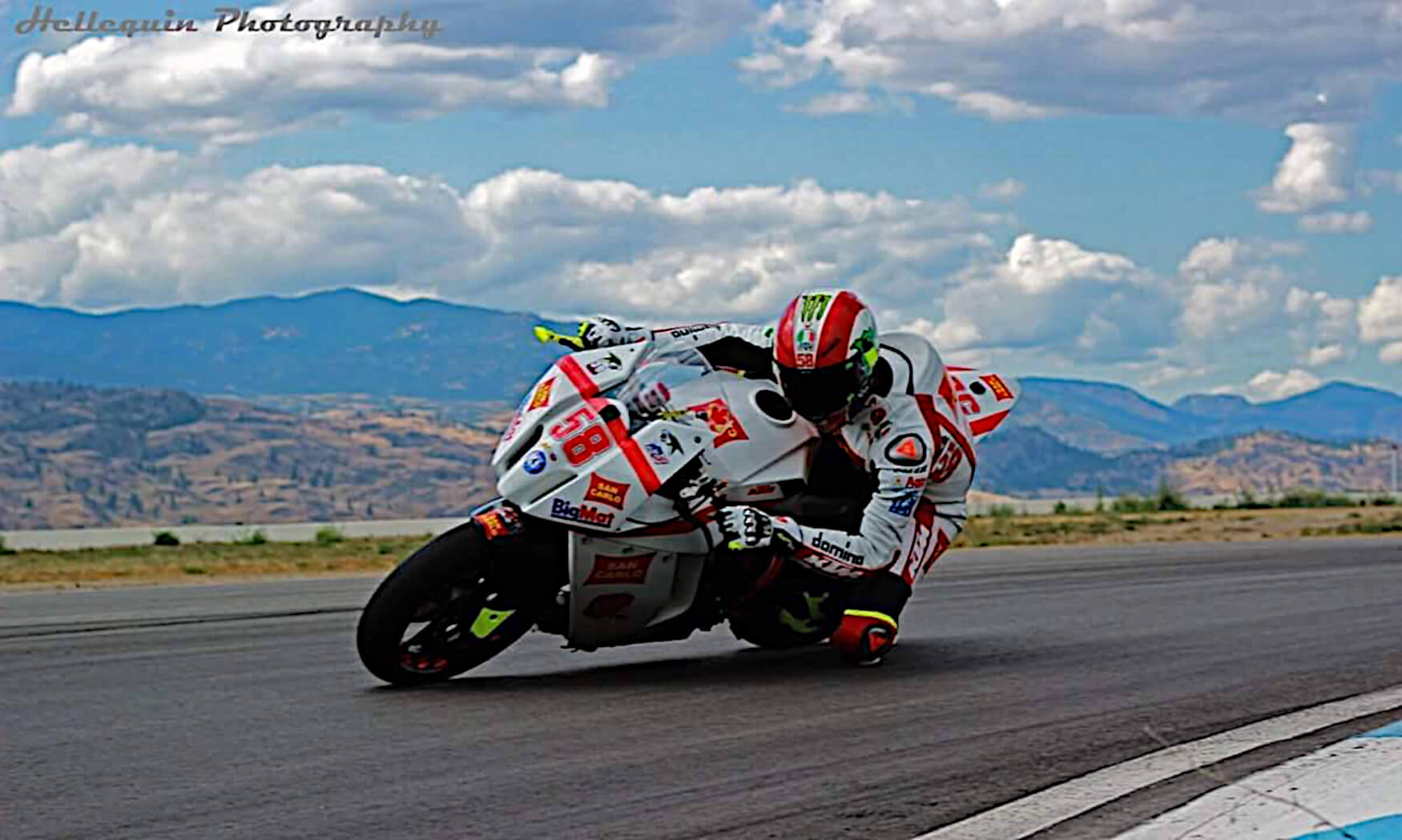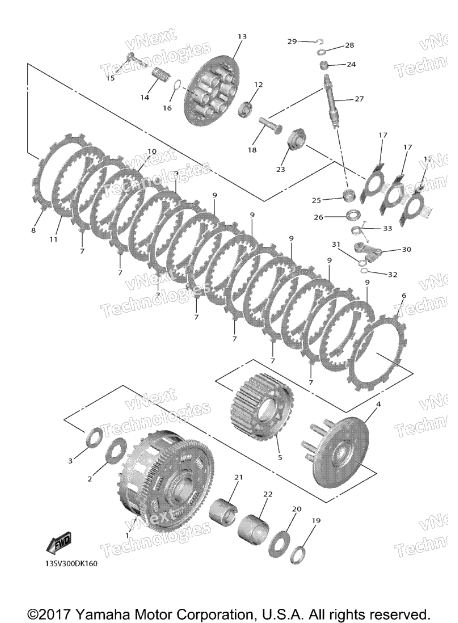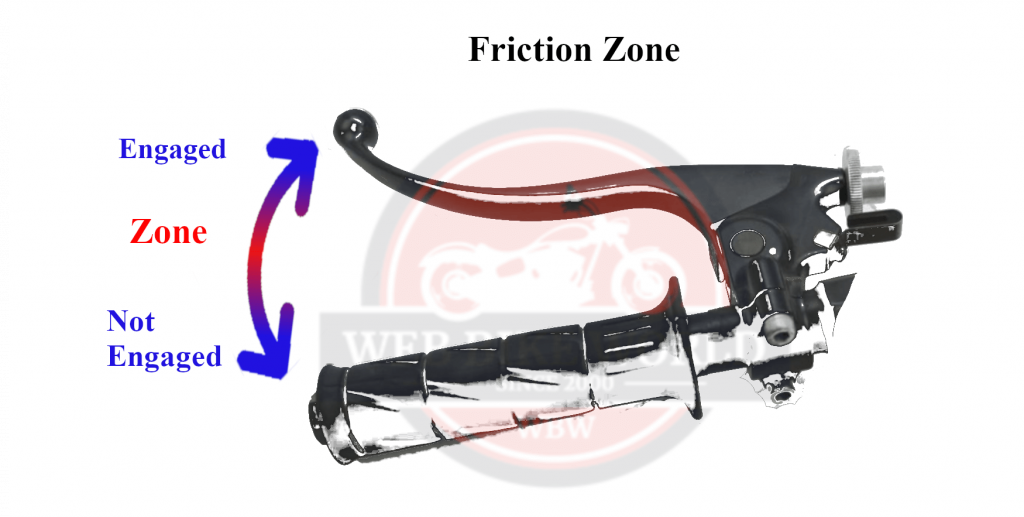What is the Clutch & How Does it Work?
In simplistic terms, the clutch is the part of the motorcycle that connects the engine and gearbox to the rear wheel and tells the bike to go forward or not.
- When the clutch lever is all the way out, this is supposed to be a full connection to the rear wheel.
- When the clutch lever is pulled into the handlebar this means you’ve disconnected the engine from the rear wheel.
I can get into more technical detail for the detail orientated types, but I find it is best to keep things as simple as possible for new riders. The clutch lever is not an on or off switch, so if the clutch lever is let go of too suddenly, you’ve told the rear wheel to go without giving the engine a chance to grab hold and it will stall.
Picture via Yamaha Motor
Feel the Response & Listen to the Engine
There are two types of beginner riders.
- Riders who focus on becoming one with the bike by listening to how it responds and feeling its reactions.
- The others focus on their visual abilities only and try to memorize where a clutch engages by looking at it.
Don’t be the second type, as not only are bikes different where the clutch engages with the engine, but can also change over time with wear, age, and adjustments.
By visually memorizing where it engages, it not only takes your eyes away from being ahead and looking at the road instead – but also sets the wrong tone where you’d need to ask yourself what happens if that engagement point changes and you’ve gotten used to seeing the engagement different? This is why feeling it is very important.
Illustration by Jennifer Angelina
What is the Friction Zone?
The friction zone is the area of engagement of the engine and rear tire while letting the lever out away from the handlebar.
Every bike is different and even two of the same year/make/model will be different where the clutch engages – which is why I emphasized don’t visually memorize it. It is a grey (in the case of my picture above – red) area that has a little to a lot of engagement and that is where the bike will start to pull forward.
You can actually control the speed with your clutch. I don’t recommend riding the clutch the whole time while moving (especially since if you cut power to the rear or come across an emergency situation – a rider can grab a handful of clutch and lose their ability to get out quickly if needing to swerve around something).
It is advantageous to use in slow speed maneuvers not to release the clutch all the way – as long as you utilize the throttle. If you cut momentum somewhere, you need to add momentum somewhere else to stay upright. More on that subject in another article.
Learn to Feel for the Friction Zone
An exercise that not only helps beginners but will help throughout your riding career.
Every time I get onto a new motorcycle or start to ride again after a long while (winters are too long here), I take a few moments to feel where the friction zone is.
Getting in the Zone
With the kickstand up sitting on the motorcycle, engine running – I’ll put the bike into first gear, on a level surface and no brakes on. Left foot back on the ground, I slowly release the clutch (super slow), until I feel the bike want to pull and the engine slightly lower in tone.
At this point the bike should start to move forward, however, I only let it move an inch or two. I can’t say enough that these are micro movements as too much or too fast and you’ll stall the bike. If done right, you should be able to push back with your left foot to the starting position to do it all again.
This is more for learning the friction zone as mostly I use the front brake and listen to the bike and feel a slight pull to know where it is. All of this is muscle memory and I suggest when you are starting to ride, to repeat the back and forth the exercise many times (more than you think you need) to build muscle memory and make riding easier for you later on.




